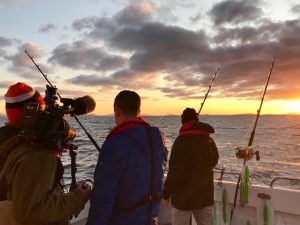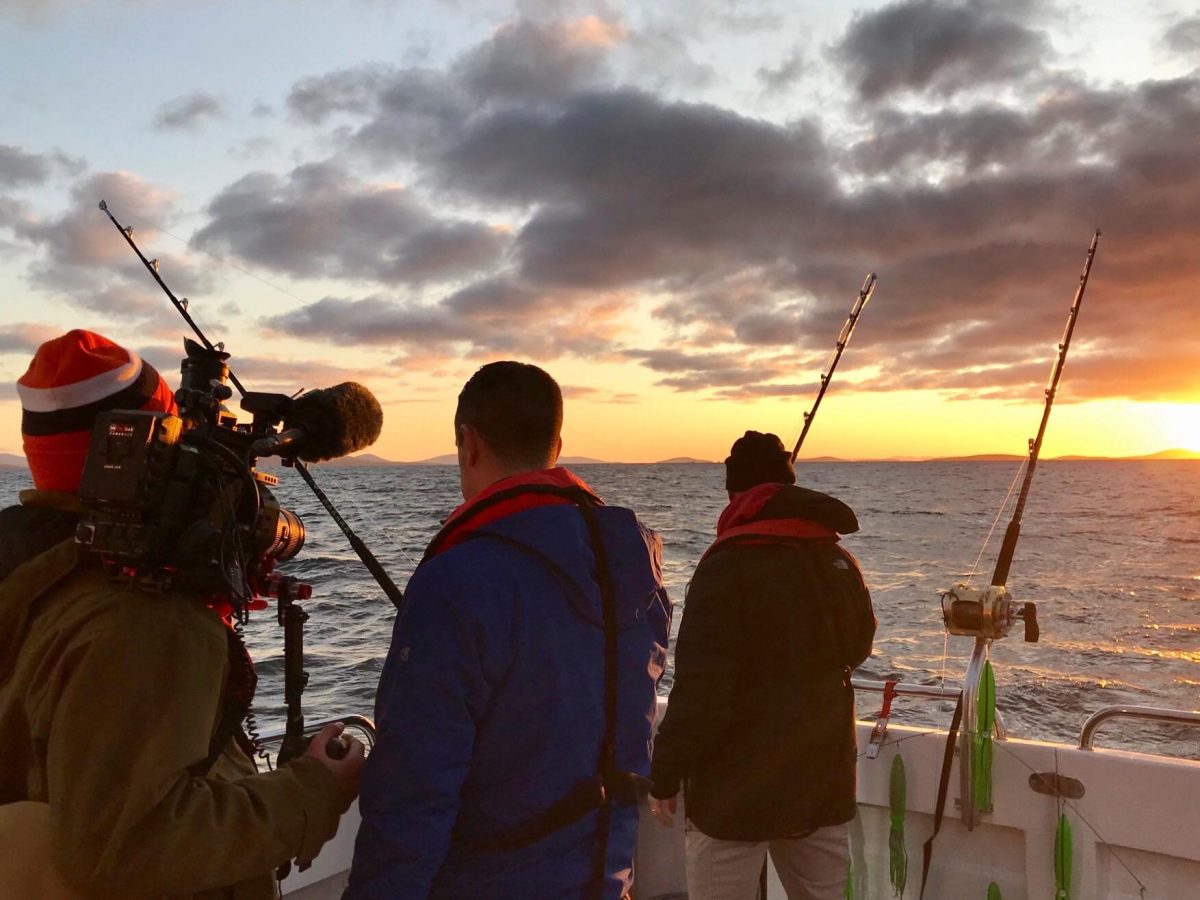
An article originally published on the Club’s sister, campaigning web site, Bluefin Tuna UK in August 2019.
For several years now, we have seen increasing evidence of a significant change in the distribution of Atlantic Bluefin Tuna across the North East Atlantic. Reports from Ireland, Western UK waters, and from Norway down to the Skaggerak between Denmark and Sweden, indicate that these iconic giants are re-populating waters they have not been seen in for fifty years or more.
The reasons for this almost unprecedented shift are not fully known.
A recovery in the Stock over the last 10 years? (following an successful 15 year recovery plan by the species global management body, ICCAT).
Multi-decadal environmental cycles in North Atlantic currents, water temperatures and prey behaviour? (Distinct from simplistic conclusions about global warming related changes).
A combination of these and other, as yet unknown or unproven factors?
Scientists, and Anglers lead the search for answers.
What is clear, is that at the heart of understanding the What, Where and Why of this huge change, is a comprehensive, science based approach bringing scientists, anglers and fisheries managers together.
In collaboration with ICCAT, the species global management body, Governments and Universities have established research programs over the last three years to gather data to help further their knowledge of this important change.
Crucial to these programs are the co-operation of the recreational angling sector. Rod and line captures of large pelagic species like ABFT are acknowledged by scientists and conservation bodies as the most effective, low impact way of bringing the subject matter into the hands of scientists.
Just a few weeks ago, such programs kicked off in the UK, Ireland, Denmark and Sweden. Below is a brief summary of those programs and the early results.
Each take a slightly different approach to this research. However, to a greater or lesser degree they ALL recognise that recreational anglers have a key role to play in their programs.
IRELAND authorised 15 Recreational vessels for their ‘CHART’ program earlier this year, and they began operations on the 15th August. I cannot locate any centralised reporting of the numbers and size of fish captured, but from the FaceBook reports of participating vessels, you can see substantial numbers of ABFT already caught, tagged and released. This pilot scheme marks the first year allowing legal, widespread recreational angler involvement in Irish waters, (previous sanctioned tagging operations have been confined to just one or two vessels). My understanding is that the Irish CHART operations are applying only floy, or ‘dumb’ tags this year, in contrast to the archival, satellite tags (PSAT’s) applied in limited numbers in previous years.
The Irish Fisheries board webpage providing information on CHART can be found here, and includes links to the list of 15 skippers that anglers can charter up till mid October when the project closes.
DENMARK began its third year of Bluefin tagging on the 24th August, operating under the oversight of DTU Aqua, the highly respected Danish Marine focused University.
The Danish program has the widest level of authorised angler participation, with 70 Recreational vessels joining the first day of operations. In 5 1/2 days to the 28th August, 38 fish have been tagged. Mostly with Floy tags only, but some with PSAT’s, acoustic tags, or accelerometers. The home page of the Danish program can be found here with regular updates of their activities. In 2018 the Danes tagged a total of 91 fish.
SWEDEN The SLU Aqua University is overseeing further tagging operations this year following on from their joint operation 2 years ago with DTU Aqua. Their aim is to tag 26 fish with a variety of PSATs, Acoustic and Floy tags. They began operations on the 25th August with 23 teams of anglers participating in support of the scientists on the tagging vessels. Updates from this program are not as ‘live’ as the Danish program and require running through a translation tool, (unless you speak Swedish of course!) A number of fish have been tagged over the first few days and if you want to track this follow the SLU Aqua FB page or this webpage.
UNITED KINGDOM Our own research program, ThunnusUK, (a joint operation between Exeter University, CEFAS and DEFRA) began its second year of operations mid-August. After tagging 10 fish with PSAT’s in 2018, (a number of which have succesfully released already as planned and are providing data to the Exeter scientists already) , the program plans to tag between 30 and 40 fish this year, and as well as the PSATs used in 2018, a number of fish will be fitted with accelerometer tags.
In a change from 2018, four authorised ‘support’ vessels will be operating alongside the Tagging vessel this year, up to two at any one time, and experienced, authorised Recreational Anglers will be able to charter those vessels to assist in the capture for transfer to the scientists.
The program is off to a positive start with thirteen fish successfully tagged and released within the first nine days of operations. The program plans to spread the tag applications across the Autumn to obtain a wide ranging picture of the size, age and location of BFT in UK waters. In addition to the above operations taking place off of the Cornish coast, smaller scale tagging will also take place this year in Welsh and I understand Scottish waters.
The program’s home page can be found here with links to the pages detailing this years Tagging operations, and access to registration application forms for anglers keen to take part.
There are many sceptics about the merits of tagging, and critics of the participation of anglers in these programs.
The reality is that we still have huge gaps in our understanding of Atlantic Bluefin, and effective management of them to avoid another boom/bust cycle requires those gaps to be filled, something numerous scientists, conservation bodies and the species Global management body ICCAT frequently call for.
Large scale Floy tagging still has some merit, even with low recovery rates, the capture information itself can be of great value. Archival PSAT’s, Acoustic and accelerometer tags can provide very detailed information about migration and feeding patterns, stock mixing, use of spawning areas etc etc….
After several decades of programs, it has been shown beyond doubt that regulated rod and line capture of ABFT is the most effective way of bringing large Tuna into the arms of scientists to execute their tagging, measuring and DNA/Blood sampling.
Mortality of Bluefin in these programs is extremely low, consistently well below 5%, and this is despite the boarding and working upon them which can take 3-4 minutes.
These programs are an excellent example of ‘Citizen science’ at its best. Let’s hope for continued success the rest of this year and some interesting data to come out of them in coming months, supporting sustainable management of this iconic, still vulnerable species.


